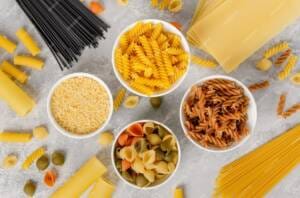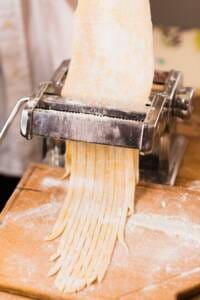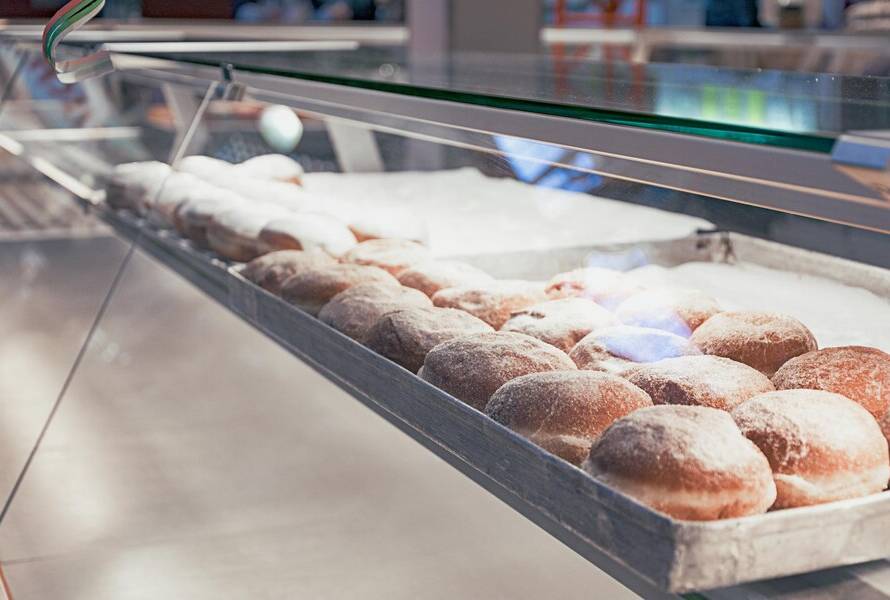
Pasta is one of the most popular food industries around the world, characterized by its great diversity and continuous demand. Establishing a pasta factory project can be an attractive investment opportunity for those interested in the food industry.
In this article, we will cover all aspects of the pasta industry, starting with its history and importance, all the way to its different types and shapes
History of Pasta Industry
Pasta dates back to ancient times, as it is believed that the Chinese were the first to make pasta. However, the development of this industry more significantly occurred in Europe, especially in Italy. In the thirteenth century, Italian merchants began transporting pasta to various European countries, which contributed to the diversity of its shapes and components. Production was initially manual, but with the development of technology, machines were developed to facilitate the production process and increase efficiency
The importance of a pasta factory project
A pasta factory project is one of the vital projects due to the high demand for pasta in the markets. Pasta is an easy-to-prepare and nutritious food, making it a preferred choice for many families. Moreover, the ability to export pasta to new markets contributes to increased profits. The global pasta market is witnessing continuous growth, as pasta is becoming increasingly popular among young people and health-conscious consumers, which increases the chances of success for this project.
Pasta Ingredients
Pasta is mainly made up of simple ingredients that greatly affect the quality of the final product. The basic ingredients include:
Wheat: The type of wheat used is one of the most important factors that determine the quality of pasta in a pasta factory project. It is preferable to use durum wheat because it contains a high percentage of protein.
Water: Water is used to moisten and shape the dough. The ratio of water should be proportional to the type of flour used to obtain the perfect dough.
Eggs (optional): Eggs are added to some types of pasta such as fettuccine and lasagna, giving them a rich taste and texture.
Types of Pasta
There are several types of pasta, each with a different character and used in a variety of recipes. Here are some common types that you can produce in a pasta factory project:
1- Fresh Pasta
Fresh pasta is made from simple ingredients such as flour and eggs, and is not dried. It is used in many delicious Italian dishes such as lasagna and ravioli. Fresh pasta maintains its wonderful flavor and texture when cooked.
2- Dried Pasta
Dried pasta is the most common type in the market. It is made from wheat flour and water, and is dried to extend its shelf life. Popular types of dried pasta include spaghetti, penne, and fusilli, and these types are ideal for display in a pasta factory project.
3- Colored Pasta
Colored pasta is made using additional ingredients such as spinach or tomatoes. This pasta is not only visually appealing, but it also adds new flavors and makes dishes more diverse, which contributes to the success of a pasta factory project.
4- Gluten-free pasta
This pasta is an ideal choice for people with gluten sensitivity. Gluten-free pasta is usually made from rice flour or corn flour, making it suitable for a wide range of consumers, thus enhancing the chances of success of a pasta factory project.
Pasta Shapes
Pasta comes in a variety of shapes that suit different tastes and preferences. Here are some common shapes that you can produce in a pasta factory project:
Spaghetti: A long, thin shape, considered the most popular and used in many traditional dishes.
Pen: A flat, wide shape, usually used in dishes such as pasta with sauce.
Fusilli: A spiral shape, ideal for catching sauces well.
Ravioli: A stuffed shape that is usually prepared with different fillings such as cheese or meat, and is considered a luxury dish.
Lasagna: Wide sheets used in layered dishes, making it a great choice for family events.
Pasta Production Process
The pasta production process includes several main steps to ensure the quality of the final product in a pasta factory project:
1-Dough preparation: Wheat flour is mixed with water (and sometimes eggs) to obtain a homogeneous dough. It must be kneaded well to obtain the appropriate consistency.
2-Pasta shaping: The dough is shaped into the desired shapes using specialized machines, which helps improve efficiency and reduce waste.
3-Drying: Pasta is dried to remove moisture, which helps increase its shelf life. The drying process must be done in a way that ensures that no loss of flavor is lost.
4-Packaging: Pasta is packed in suitable packages to maintain its quality and prevent contamination.
Machinery and equipment in a pasta factory project
The machines and equipment used in a pasta factory project are essential factors that determine the quality and efficiency of production. Equipment varies depending on the size of the factory and the type of pasta produced, but there are some essential machines that are indispensable, such as:
Dough mixers: used to mix ingredients homogeneously, ensuring the quality and texture of the dough.
Shaping machines: work to shape the dough into the desired shapes, such as spaghetti, fusilli, and ravioli.
Drying machines: used to remove moisture from pasta, as the drying process contributes to extending the shelf life of the product.
Packaging machines: Pasta is packed in suitable packages, ensuring its quality is maintained and enhancing its attractiveness in the market.
Pasta factory project owners must choose equipment carefully, as the quality of machines directly affects productivity and efficiency
Safety and quality in a pasta factory project
Safety and quality standards are essential elements in a pasta factory project. The factory must adhere to food safety standards by:
1-Employee training: Providing the necessary training for workers on how to handle machines and food ingredients safely.
2-Quality inspection: Conducting periodic tests on raw materials and the final product to ensure that they comply with health standards.
3-Factory cleanliness: Maintaining a clean work environment to reduce the risk of contamination, which enhances the quality of the product and the reputation of the factory.
4-Proper storage: Raw materials and produced pasta must be stored in appropriate conditions to ensure their safety and quality.
These efforts contribute to building consumer confidence and increasing demand for products, which enhances the success of the pasta factory project.
Future trends in the pasta industry
The pasta industry is constantly evolving, with new trends emerging that reflect changes in consumer tastes and preferences. Among these trends are:
1-Healthy products: Increasing demand for pasta made from whole grain flour or gluten-free alternatives. This trend is a good opportunity for pasta factory project owners to expand production lines and meet consumer needs.
2-Pasta fortified with vitamins and minerals: Some manufacturers have begun adding nutritional ingredients such as proteins or fiber to pasta, which increases its nutritional value.
3-Sustainable packaging: There is a growing interest in reducing the environmental impact of packaging, which prompts factories to use recyclable or environmentally friendly materials.
4-Flavor innovations: Some have begun to offer pasta with unconventional flavors, such as seaweed or various spices, which increases the appeal of the product.
Following these trends and exploiting them effectively can have a positive impact on the success of a pasta factory project.
Cooperation and partnerships in a pasta factory project
Partnerships and cooperation with other companies are effective strategies that can enhance the success of a pasta factory project. Several types of partnerships can be considered:
1-Partnerships with suppliers: Collaborating with reliable suppliers can ensure the availability of high-quality raw materials at reasonable prices.
2-Cooperation with distribution companies: Partnering with local and international distribution companies contributes to facilitating the access of products to the market and increasing sales volume.
3-Cooperation with restaurants and hotels: Providing pasta products to restaurants and hotels can increase the factory’s reputation and provide opportunities for promotion.
4-Collaboration with consulting companies: Collaboration with expert consultants can enhance innovation and development in pasta production, which contributes to improving product quality.
These partnerships are a vital element in building a strong network that enhances the success of a pasta factory project and helps it adapt to changing market requirements
The pasta industry is a promising field characterized by diversity and innovation, providing great opportunities for investors wishing to enter this sector. Establishing a pasta factory project requires good planning, understanding production processes, and adhering to quality and safety standards. To achieve success in this field, it is important to benefit from the available expertise.
This is where ProNano Food Industry Consulting comes in, providing specialized consulting services to those interested in the pasta industry. The company can help you design business plans, choose the right equipment, and advise on quality standards. If you are thinking of launching a pasta factory project or want to improve your current operations, you can contact ProNano for professional advice that will support the success of your project. Invest in their expertise and start your journey towards achieving your goals in the pasta industry
Read more about the secrets of making croissants



